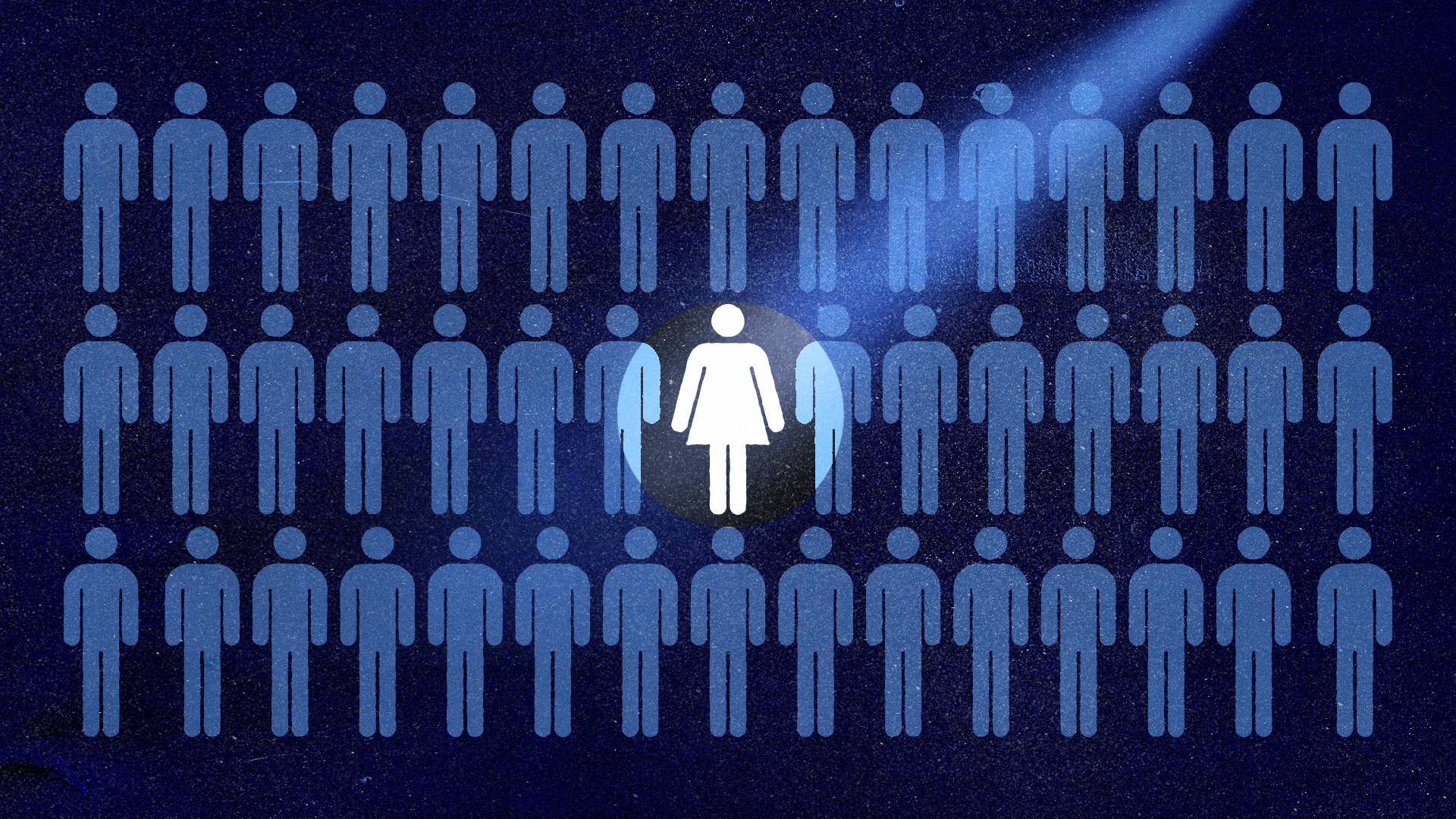
On August 6, Kanye West hosted the second livestreamed listening party for his next album Donda, and the new version was dramatically different from the first. Among the changes were new guest vocals, bringing the total number of features to 28, including the Weeknd, Lil Baby, Fivio Foreign, Kid Cudi, Playboi Carti, and more. Of course, Donda has yet to be officially released and it will likely undergo more changes before it hits streaming services. But the work-in-progress tracklist raised some questions, including: Where are all the women?
“It is wild to me that men are making entire bodies of work without a single woman on the project,” reads one viral tweet. “And I’m sure if you look at song-writing and producing credits, the story is the same. WILD.”
To be fair, this person overlooked G.O.O.D. Music’s 070 Shake, whose vocals were heard during the livestream. Female singers were also present in the Sunday Service choir. Still, the role of women was secondary to men on the latest version of the album, as female artists only contributed background vocals. And on an album with nearly 30 musical guests, women represented a very small percentage of the vocalists.
This issue is much larger than Kanye and Donda, though. There are four rap albums in the top 10 of the Billboard 200 right now, and each of them feature minimal contributions from female artists. Nas’ 15-track album King’s Disease II includes only one feature from a woman (Lauryn Hill) out of eight total guests. Lil Baby and Lil Durk’s 18-track album The Voice of the Heroes has four features, none of which are women. Out of 12 features on Polo G’s 20-track album Hall of Fame, Nicki Minaj is the lone female voice. And the three-disc edition of The Kid LAROI’s F*ck Love 3 lists 13 total features. None of them are women.
This is all happening during a time that has been dubbed the “female rapper renaissance” by publications like The New York Times. There’s a whole generation of emerging talent who cover a wide range of sounds, and there are now dozens of female rappers who are thriving and putting up numbers equal to their male counterparts. In March, Cardi B became the first female rapper to top the Billboard Hot 100 five times, while Megan Thee Stallion represented the first female rapper to win Best New Artist at the Grammys since Lauryn Hill in 1999. As records like these keep getting broken, it’s even more strange that we don’t hear more female artists on prominent rap albums.
The lack of women featured on rap albums from male artists may call for an immediate dismissal amongst some listeners, but it’s worth exploring how rap collaborations come about, and why women are left out. The lack of female features during the last Donda stream came as a surprise to some, because Kanye has a history of working with women. Some of his biggest collaborations have been with Beyoncé, Nicki Minaj, Rihanna, Teyana Taylor, and 070 Shake. It does seem that Donda is following a different direction from his past work, though. Some fans have suggested the features are a reflection of his current tastes, arguing that he’s simply working with the artists who best suit the tone of the album. (Kanye has stayed silent throughout the rollout, so he hasn’t yet explained his reasoning.)
Many rappers have made it clear that they prefer collaborations to come together organically and stem from genuine relationships. “It ain’t about the money to me. It’s about just really making good music,” Roddy Ricch said in a 2020 interview. “Who really tries to sit there and make music with the niggas they fuck with? Niggas do shit for streams, really just for clout. I refuse to be a person like that.” So, keeping an artist’s creativity and vision in mind, is it appropriate to force a collaboration for the sake of filling a quota? Nothing good comes from faking a connection, of course, but it’s up to the artist to confront why their own creative vision doesn’t include more women.
Arguing that there isn’t at least one woman who fits with the aesthetic or creative direction of a project is downright lazy and upholds the blatant sexism in an industry that allows women to be overlooked. Take Pop Smoke’s second posthumous album Faith, for instance. The deluxe album features 30 tracks and 28 guest features. Dua Lipa is the only woman to appear on the album, and she is a pop star, not a rapper. Victor Victor Worldwide and Republic Records had every opportunity to include more women rappers on the album. There’s a famous video of Pop reacting to Nicki Minaj’s verse on the remix of “Welcome to the Party,” and it could have been a nice full-circle moment to extend another invitation to Nicki to hop on a song like “Woo Baby.”
Cole’s The Off-Season is another major album this year that failed to include women. While Cole is known to tackle his albums solo, he has noted that he made a deliberate effort to collaborate with other artists on this project. “Do you really wanna look back and be like, ‘You didn’t work with nobody? You didn’t have any songs with nobody? You just cool with that?’” Cole asked himself in The Off-Season documentary. “No, OK. So start saying yes to some features.” There are five features on the 12-track project, but none of which are women.
In the past, some women have been able to break the ceiling. Nicki Minaj has been featured on a handful of male albums from artists like Kanye West and Lil Wayne, and her seniority has undoubtedly helped her. When female artists get rare opportunities to collaborate on albums from male artists, though, their contributions are often confined to performing hooks or recording twerkable verses. They aren’t given the same variety of opportunities that male artists get. So, despite some of the progress that has been made in the recent years, there is unfortunately still a long road ahead for women in rap.
This isn’t the same situation as a TV series reboot where you can just add a bunch of people just to fit an inclusion and diversity quota. Forcing unnatural collaborations won’t solve the problem, but this conversation does deserve more attention. More awareness about the issue could produce different results. A little pressure from fans who let their favorite artists know they want more features from female rappers could go a long way. The louder and more persistent people are, the more likely an artist is to consider the wants and needs of their fansbase. Fans vocalizing opinions has worked when it comes to female representation in the past. After Rolling Loud organizers consistently received criticism over the festival’s male-dominated lineup, more women were added to the subsequent lineups.
Fans can only do so much, though. The responsibility ultimately lies on the artists. In 2021, it’s impossible to miss the countless women who are bringing value to rap and would make great collaborators. To overlook women in this era is not an oversight; it’s prejudice.

